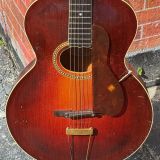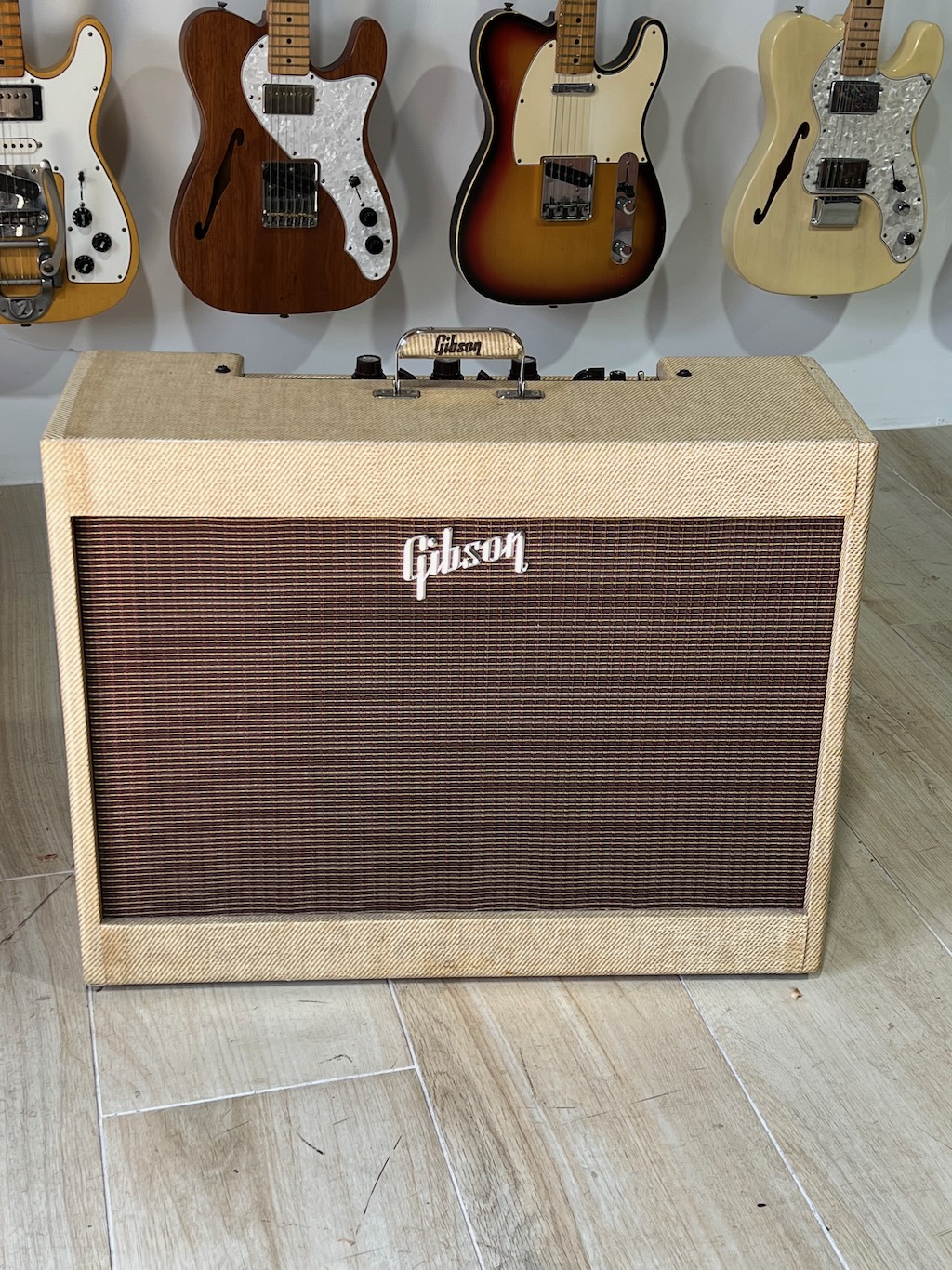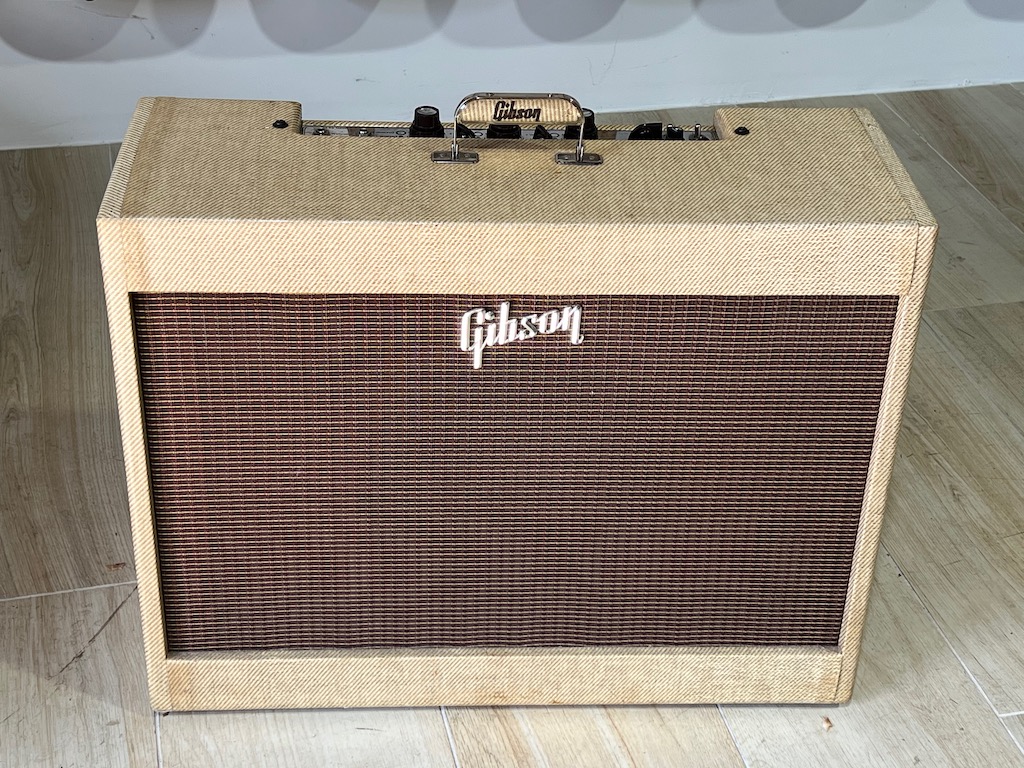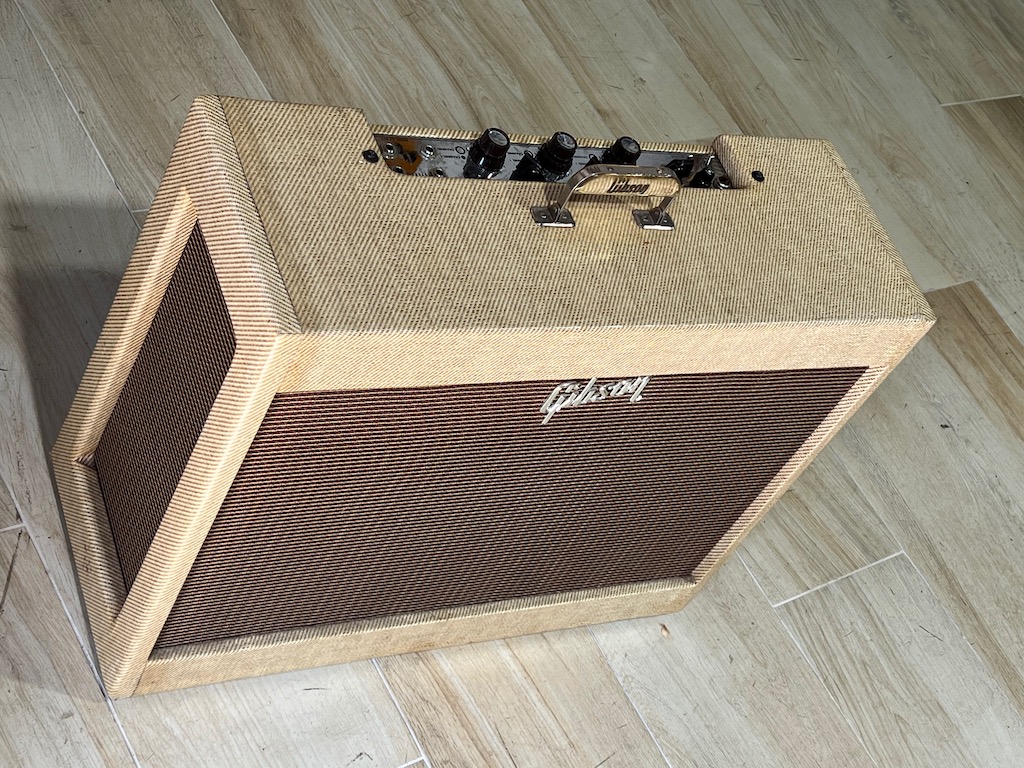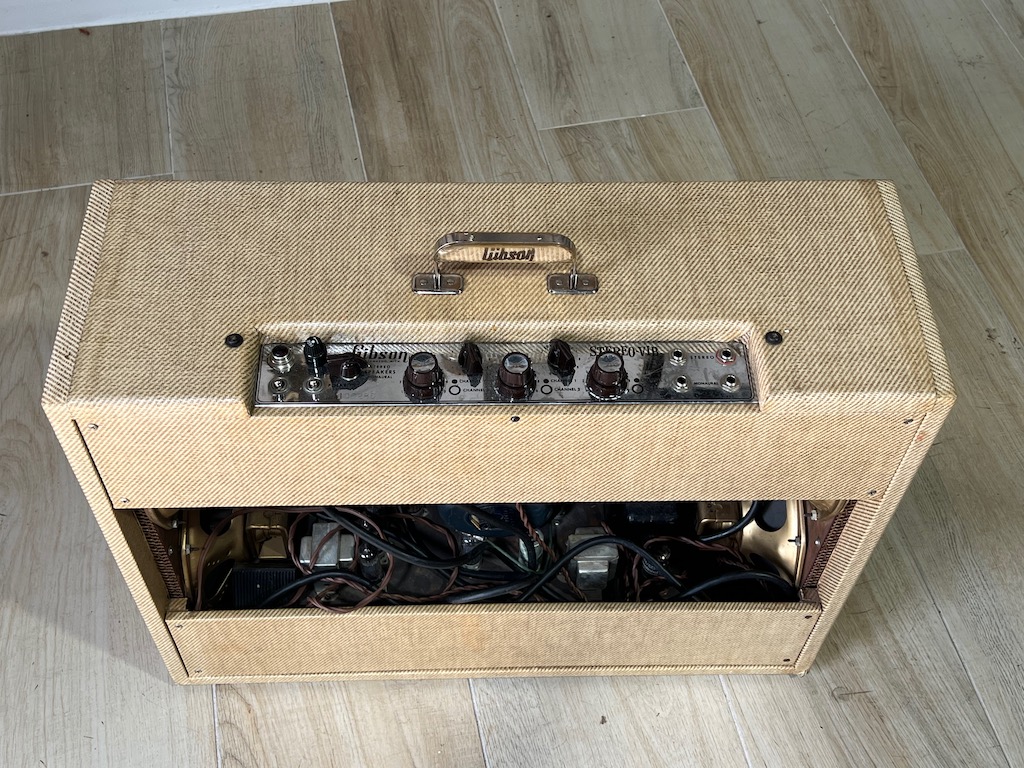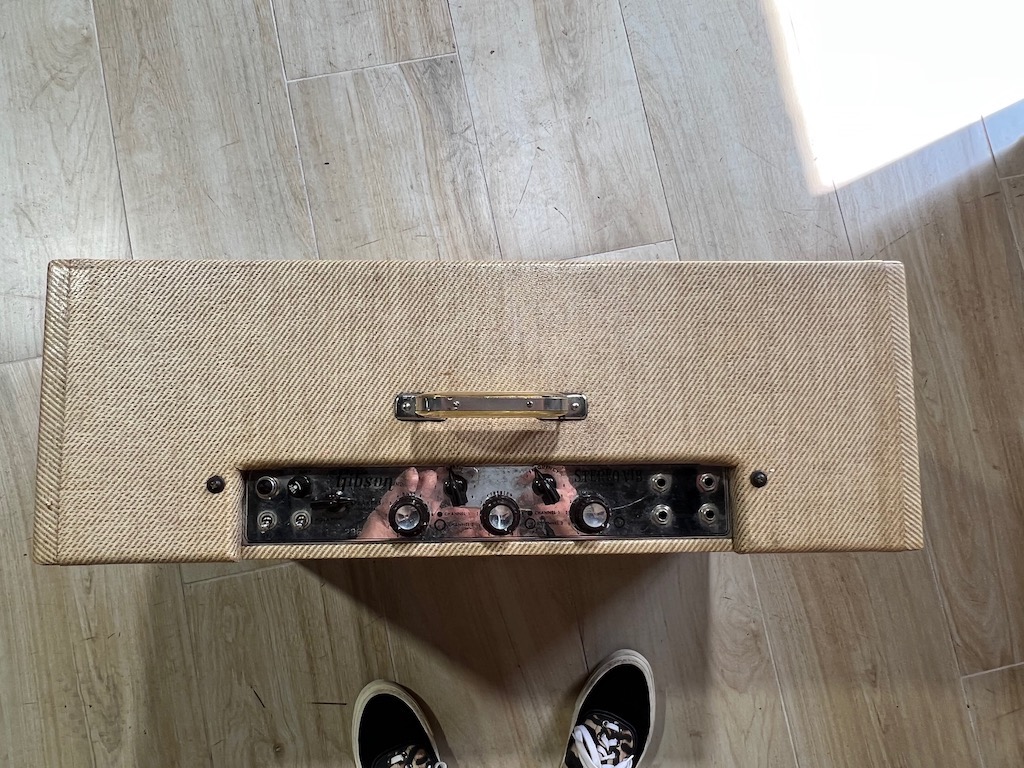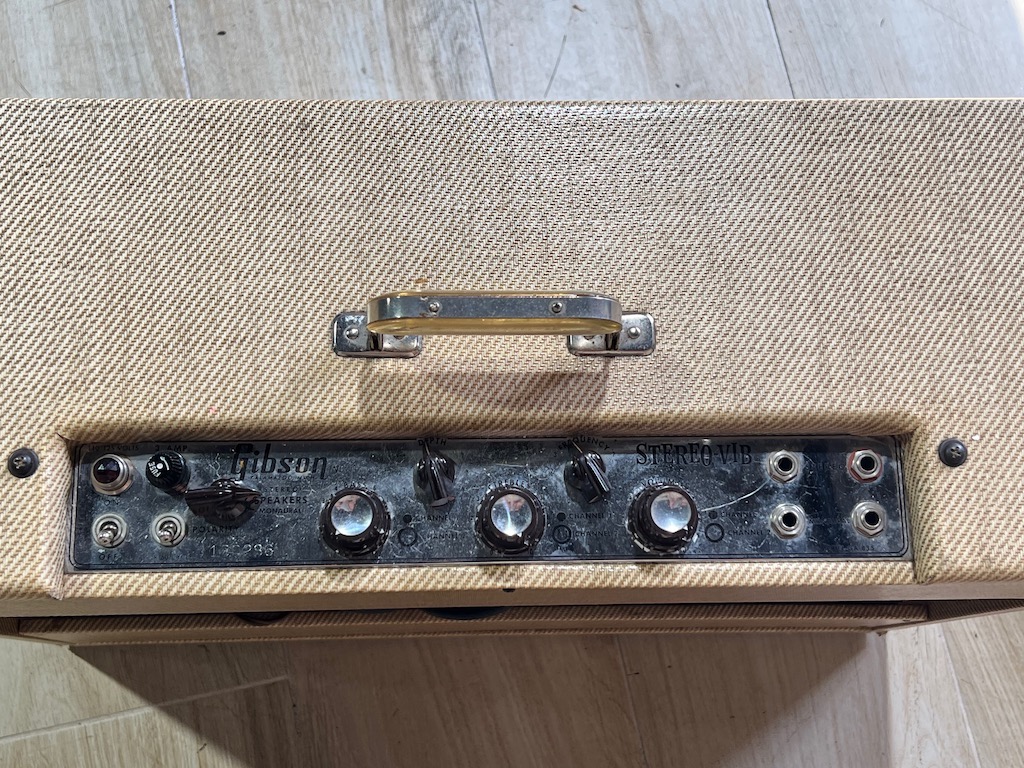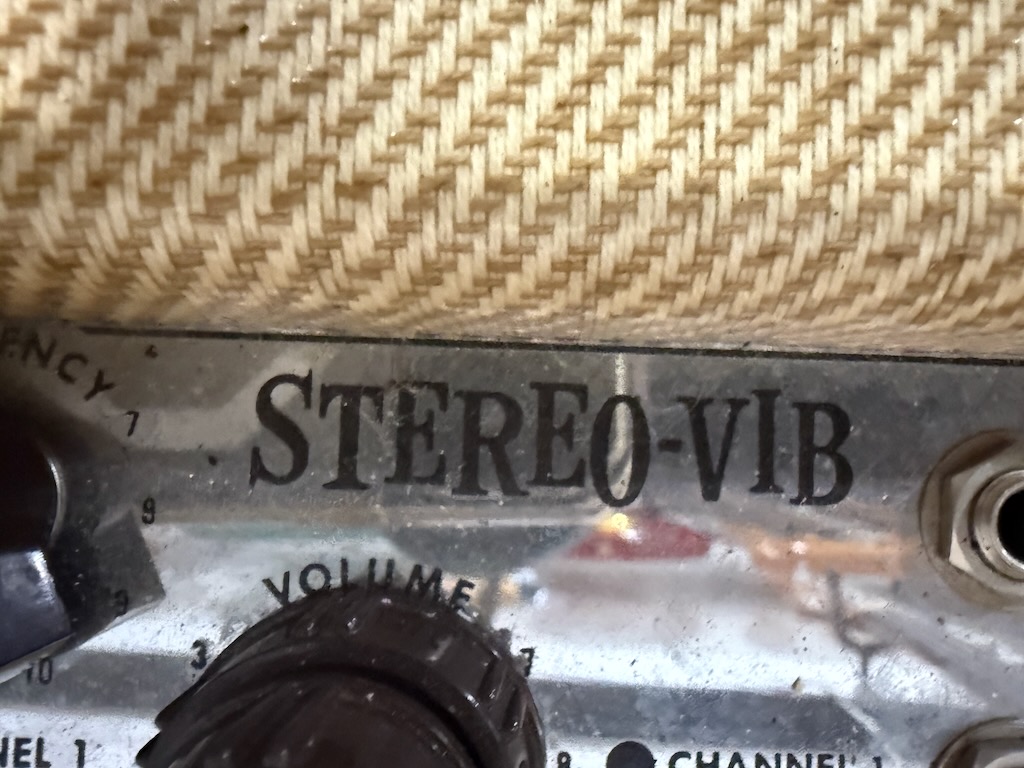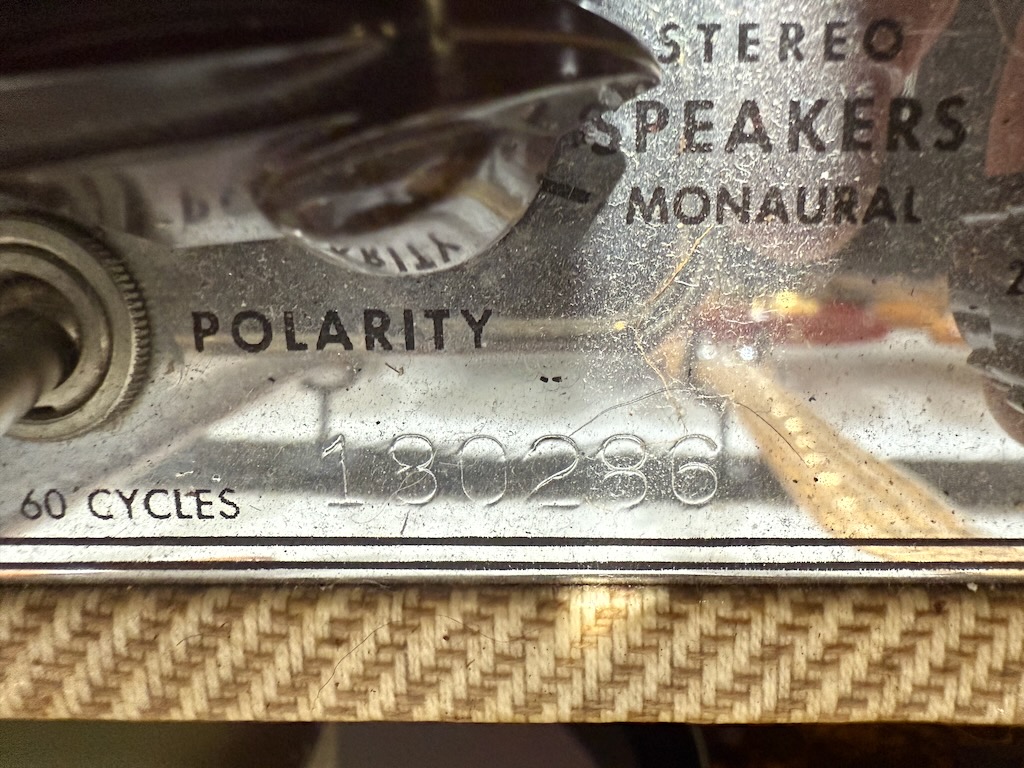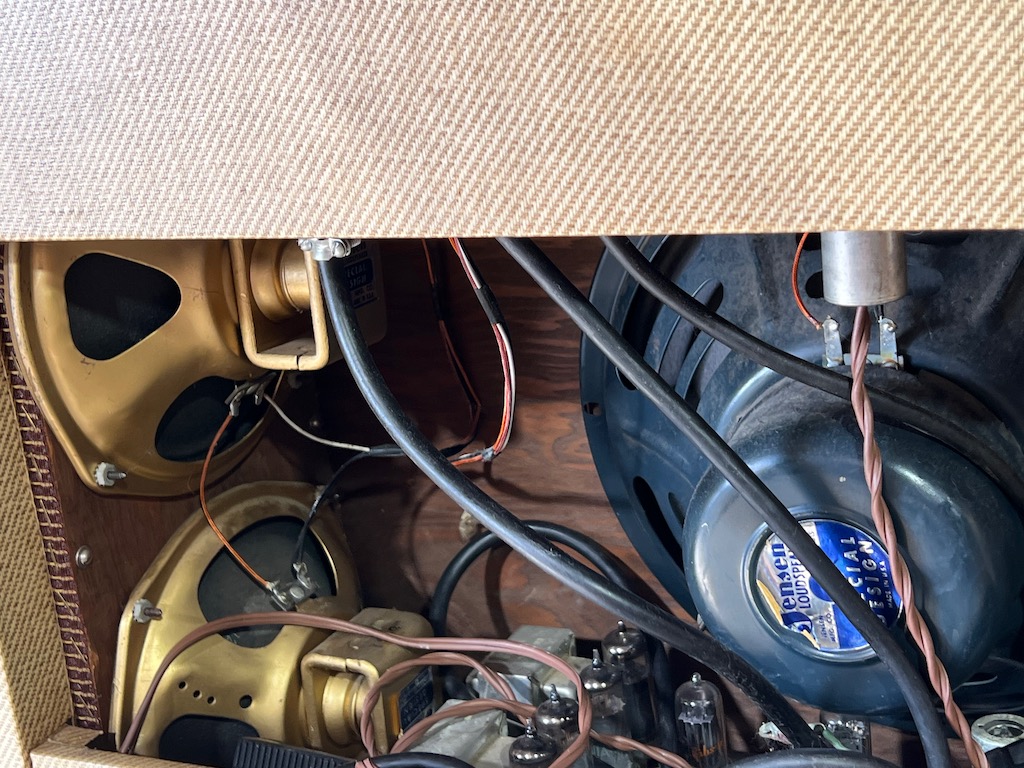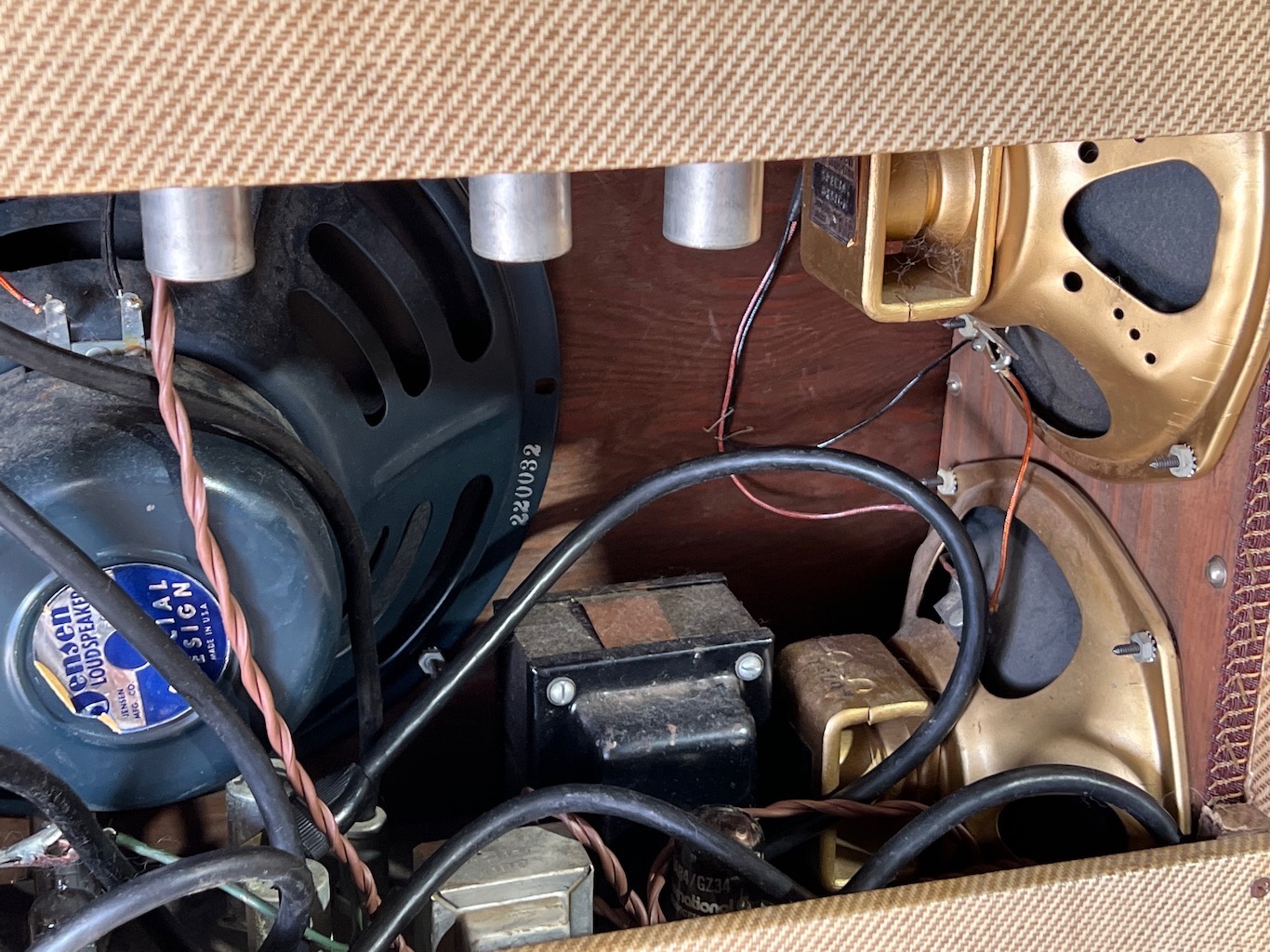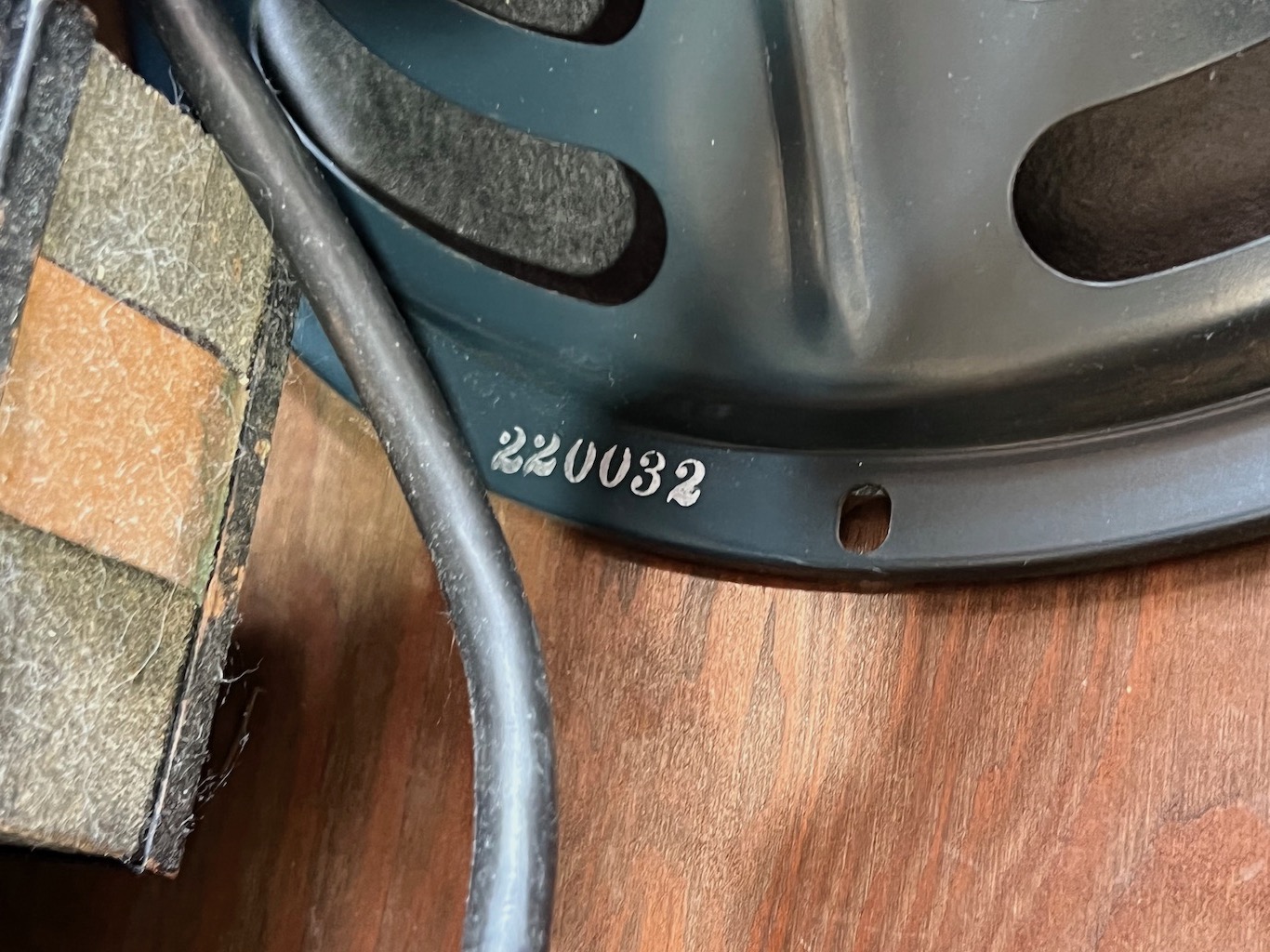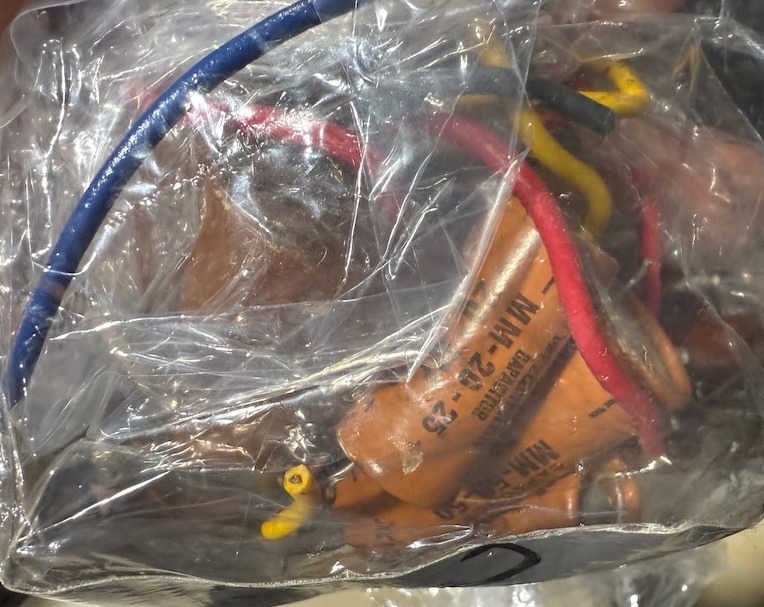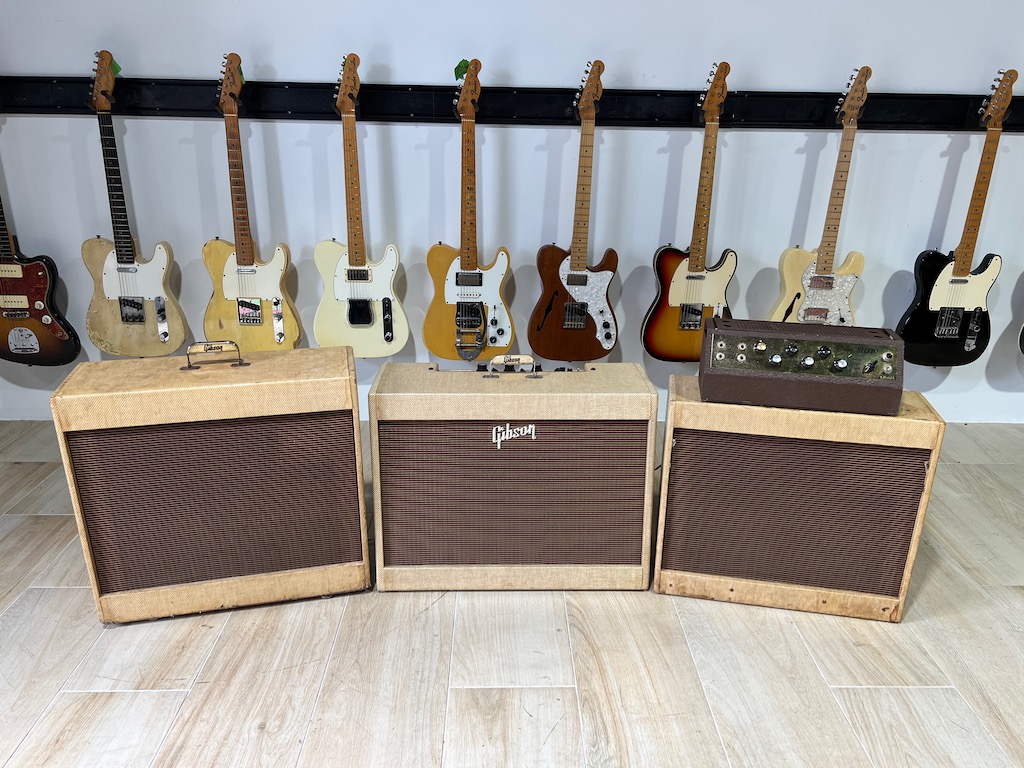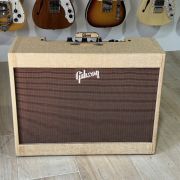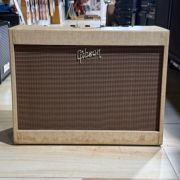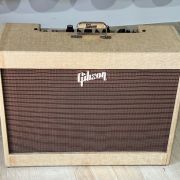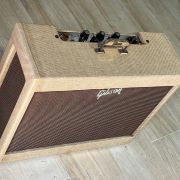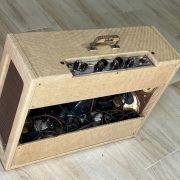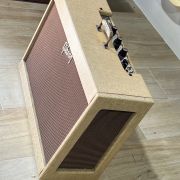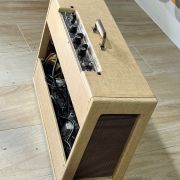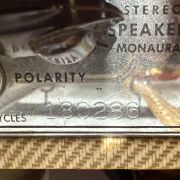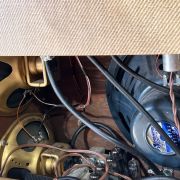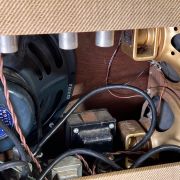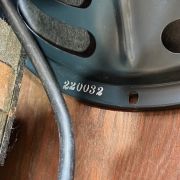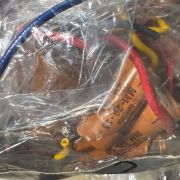- Home
- Amplifiers
- 1960 Gibson GA-83S Stereo Amp
1960 Gibson GA-83S Stereo Amp
| Year | 1960 |
|---|---|
| Make | Gibson |
| Model | GA-83S Stereo Amp |
| Condition | Exceptional |
Description
“Dont know what to do with your Gibson ES-345 Stereo guitar??” This rare gem is the coolest amp made by Gibson. This Tweed GA-83S is a real 1 piece Stereo amp & was their 1st attempt. Before the better-known, wedge-shaped stereophonic GA-79RVT, Gibson got its feet wet in stereo with the GA-83S Stereo-Vib, designed in 1959 and produced in a total of just 279 units before its demise in ’61, according to Gibson’s shipping records. It’s got some slight water staining to its lower areas that can be cleaned up & look far better. It’s all original & in exceptional original shape ready for your next gig or personal collection.
From Vintage Guitar Magazine May 2015:
Rather like the great Magnatone stereo amps, the GA-83S used a lot of tubes: three 12AX7s in an upper preamp chassis and another in the lower chassis (housing the power amp and vibrato circuit), two 12AU7s, three 6CG7s, four 6BQ5s (a.k.a. EL84s), and a GZ34 rectifier. Yep, 14 in all. The entire thing was configured in genuine stereo; that is, into two independent amps. You could plug in one of Gibson’s nifty stereo guitars, such as the ES-345 or ES-355, and route each pickup to a separate side, or plug in a boring old mono guitar and spice it up via a linked stereo routing with ping-pong vibrato to let you know you were really trippin’. To make all of this happen in a certified left-to-right fashion, the GA-83S employs five speakers and two output transformers, each of which is fed approximately 18 watts from its own pair of EL84s, which in turn have their own 6CG7 phase inverter, which receives signal from an independent preamp path generated by the front-end circuit in the upper chassis. The final path of each side is ultimately routed either to its own pair of 8″ alnico speakers mounted in baffles on either side of the cab, or (in some mono modes) summed to a single 12″ Jensen P12R firing forward in the traditional manner (a speaker rated far shy of the amp’s full 36-watt mono output), while in others, all five speakers are in play. Between the two mono inputs and two stereo inputs and the Stereo/Monaural switch, the full range of output options includes:
1) Speaker selector on mono, guitar in either of the two mono inputs: 12″ only.
2) Speaker selector on stereo, guitar in either of the two mono inputs: all four 8″ working, no 12″ output.
3) Speaker selector on mono, guitar in either stereo input: all speakers firing, all four 8″ plus the 12″.
4) Speaker selector on Stereo, guitar in right stereo input: right side 2 x 8″ firing.
5) Speaker selector on stereo, guitar in left stereo input: left side 2 x 8″ firing.
The latter two options, running together, would clearly have been Gibson’s intended mode for use with its stereo guitars of the day.
For all this, the GA-83S’s preamp and output chassis’ circuits aren’t overly complex, and the control panel is admirably simple. Though it does its own thing, the preamp stage looks more like Fender’s brownface/blackface topology (yet to come) than anything considered “tweed,” with independent Treble and Bass controls sandwiched between a first gain stage and a gain make-up stage for each channel, both provided by 12AX7s. The two halves of a 12AU7 in the output chassis provided another slight gain stage for each side of the stereo path, and a vibrato circuit based around a 12AX7 applied bias modulation to the cathodes of each of a pair of 6CG7 tubes coming next in line, before each channel hit its half of another 6CG7 used as a simple split-phase inverter. Functions are kept extremely tidy on the upper-rear-mounted control panel thanks to Gibson’s use of concentric pots for each channel’s Volume, Treble and Bass controls, plus standard controls for the stereo vibrato’s Depth and Speed.
You may also Like



